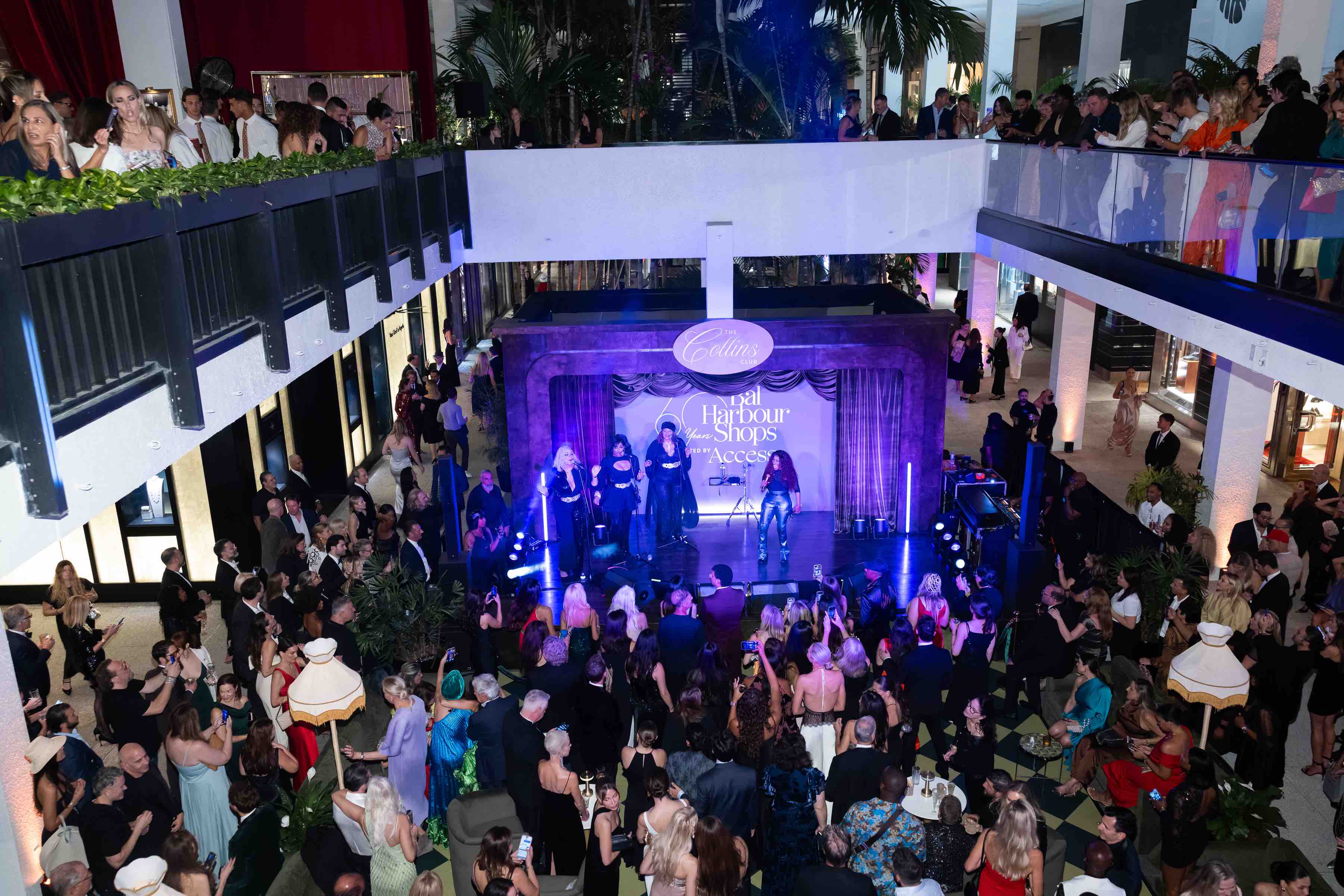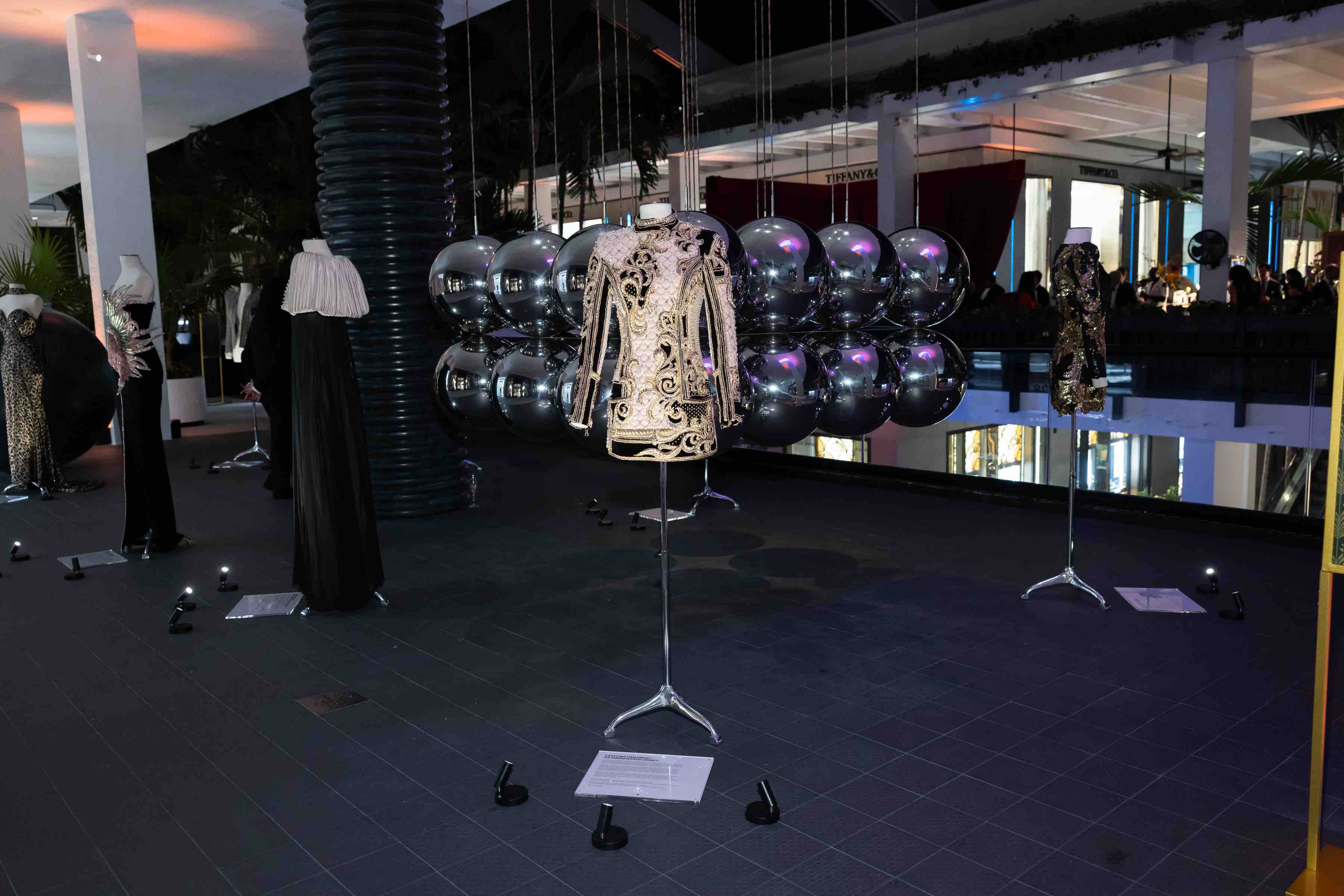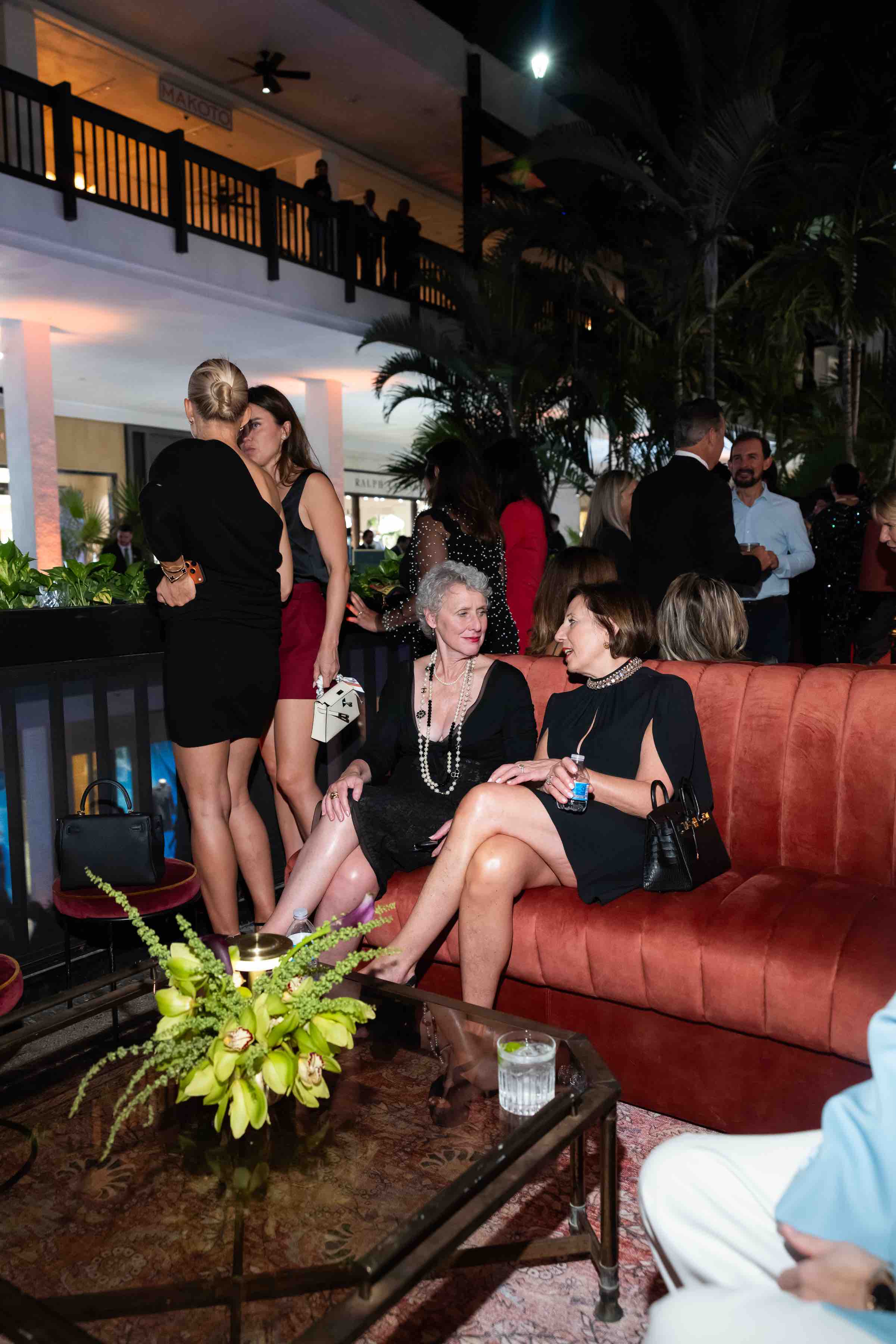F L A U N T


I didn’t expect to feel emotional walking back into Bal Harbour Shops for its 60-year anniversary celebration, but memory has a way of rising through architecture. The courtyard of palms, the fountains, the light—it all returned like a tide. Growing up in Miami, Bal Harbour wasn’t just a mall; it was my sanctuary. It was the first place where I felt permission to be fully myself as a young gay kid who loved fashion more than football, who lingered at windows the way other teenagers hovered over arcade games.
Bal Harbour was where I learned to see beauty—and where I learned to see myself.
My mother introduced me to the Shops. She loved elegance, yes, but she also loved to shop—not just to buy things, but to stroll, to linger, to browse and discover beautiful things. Bal Harbour wasn’t just a destination to her; it was a ritual.

Sometimes we’d stop at the old Santa Fe News & Espresso on the second floor, where Avenue 31 Café sits now. Other days, we’d eat at Carpaccio—still one of the greatest front rows in Miami for people-watching. Afterward, we’d walk. We’d window-shop. We’d drift into boutiques under the guise of just looking, which of course was never entirely true.
And we talked—endlessly—about life. Mine, of course, was impossibly dramatic, riddled with adolescent angst and emotional theater. What I thought were earth-shattering disasters were, in retrospect, probably quite ordinary. But she let me have them anyway. She listened, engaged, amused—and because she was my mother, she kept tabs on me, on my world, on the messy heart of a teenage boy trying to understand himself.
It was after one of those afternoons, when I was seventeen and a senior in high school, that I finally told her I was gay. I was terrified; she wasn’t. She just smiled at me and said, “No shit—I knew since birth.” And just like that, the thing I had feared most became the thing that freed me.
That Christmas, she bought me my first pair of red velvet Tom Ford–era Gucci pants at the brand’s boutique in Bal Harbour—trousers so glamorous they almost felt fictional. Clutching onto that beautifully sleek shopping bag, I must have checked my reflection in every window, half-afraid the magic might disappear if I stopped looking. That mixture of pride, fear, and possibility still lives in me. She passed a few years ago, but Bal Harbour is one of the places where I still feel closest to her.
Bal Harbour itself has a history far larger than mine. When it opened in the mid-1960s, it was one of the first open-air luxury shopping centers of its kind. Its significance was cemented early when Neiman Marcus chose it as the location of its first store outside of Dallas, a bold move that helped redefine luxury retail in America. Under the Whitman family, it became one of the first shopping centers in the U.S. to actively court European fashion houses. Gucci was among its earliest luxury tenants in the 1970s, helping transform Bal Harbour into an international fashion destination long before the idea of a “luxury mall” even existed.

In the early 1990s, Versace opened its Miami boutique at Bal Harbour Shops, draped in baroque silk and attended by Gianni and Donatella Versace alongside models and editors—a glamorous signal that Bal Harbour had entered a new fashion stratosphere. It quickly became a magnet for celebrity clientele, with Cher, Madonna, and Elton John among its most frequent shoppers.
Being back for the anniversary brought a new layer of meaning — not just personal history, but personal accompaniment.
That night, I wasn’t alone—I was with my best friend since high school, my ride-or-die chick, who had lived so much of this story with me and later built her own within these walls, working for years at Valentino, Saint Laurent, and Gucci. Fashion didn’t just bring us there; it was one of the threads that never stopped stitching our lives together.
Reconnecting with Matthew Whitman Lazenby—Bal Harbour’s current CEO and a fourth-generation member of the family behind the Shops—felt oddly full circle. We went to high school together, though I had no idea at the time that he was heir to the very place that quietly shaped so much of my adolescence. Learning that years later already felt surreal. Seeing him again at the anniversary celebration felt like time folding in on itself—the past and present, the personal and historic, meeting in the same open-air corridors.

And transformation is exactly what’s underway.
The Whitman family—still the stewards of Bal Harbour six decades later—is adding approximately 200,000 square feet of new retail space as part of its next chapter. Plans include 30+ new luxury and experiential stores, along with expansions and relocations of major houses like Prada, Balenciaga, Saint Laurent, and Brioni. The expansion is expected to open in the summer of 2026.
Financially, Bal Harbour remains in a league of its own, generating an estimated $2,000 to $3,000 per square foot in annual sales, far beyond typical U.S. retail. Dining remains central to the experience, with institutions like Carpaccio and Makoto helping drive nearly $70 million in annual restaurant revenue.

Some additions are personal to me as well.
China Grill—my favorite Miami restaurant growing up—was also where I celebrated my 18th birthday, though I didn’t realize at the time it would double as a quiet farewell. The following week, I left for New York to start college. I would return to Miami often, of course, but I never again lived there. Created by legendary restaurateur Jeffrey Chodorow, China Grill was trailblazing in its time—one of the first on South Beach to popularize what was then called nuovo or fusion cuisine. Now, decades later, its return to Bal Harbour feels like a familiar voice in an entirely new room. Classics like the lobster pancakes and duck noodles, served again at the anniversary celebration, carried with them a flood of memory—not just of what was, but of the moment my life found its next current.
This evolution is made possible by a $740 million construction loan secured by Whitman Family Development—a rare investment for a shopping center still owned and operated by its founding family. The seed money for Bal Harbour came from Matthew’s great-grandmother; his grandfather secured the center’s first luxury tenants, including Gucci; and today, Matthew carries that legacy forward.

What stayed with me most that evening wasn’t the size of the expansion or the spectacle of the event—it was the feeling. The architecture may evolve, the tenants may shift, the square footage may grow—but the spirit remains quite familiar and intact.
Bal Harbour has always been more than a shopping center.
It has been a sanctuary.
A place where I shopped with my mother, discovered myself, fell in love with fashion, and learned how to belong to my own life.
And to return all these years later feels like an act of gratitude—a quiet way of honoring the place that, in so many small, unspoken ways, honored me first.
